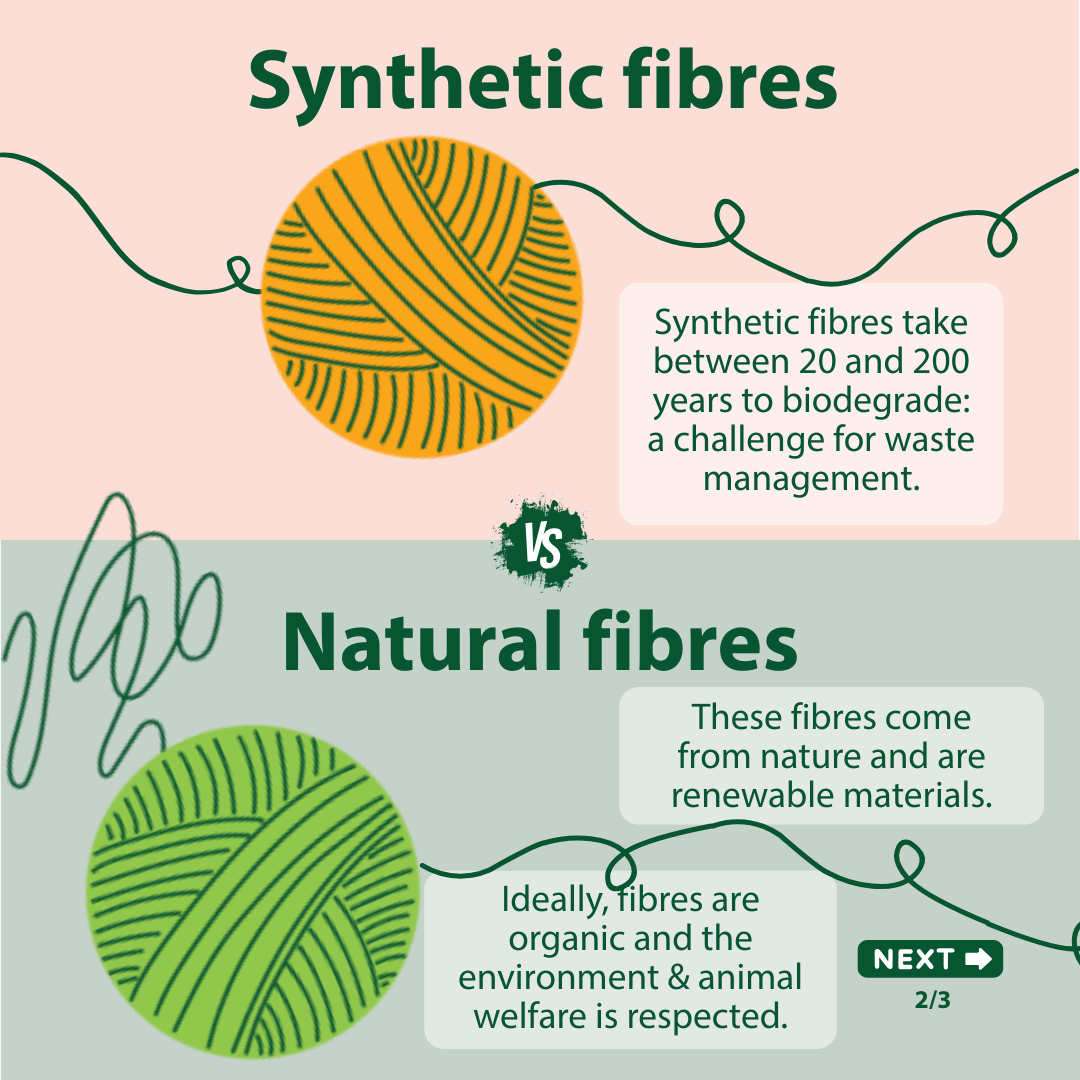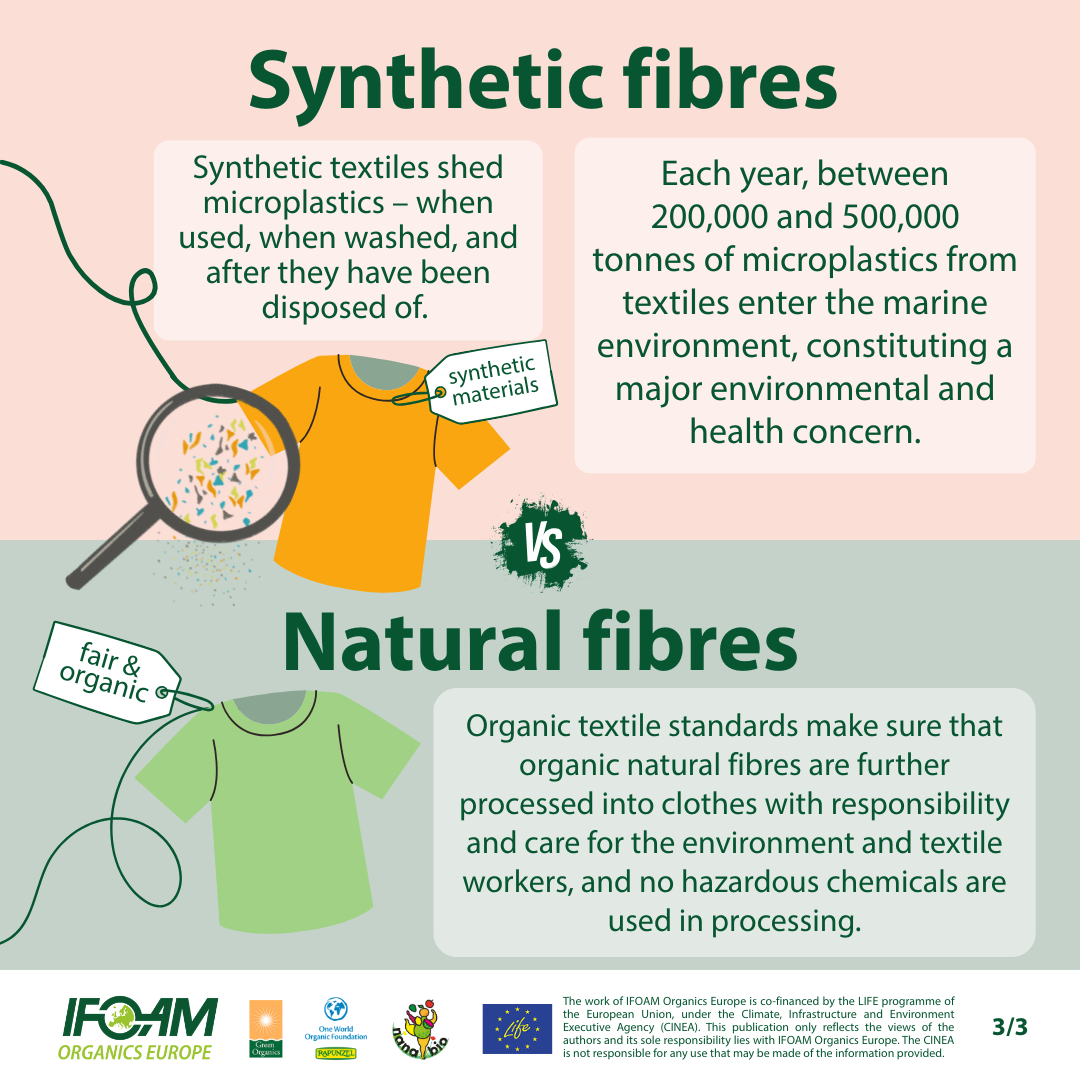Synthetic fibres VS natural fibres
From greenhouse gas emissions to water and waste pollution, the textile industry is the fourth most environmentally harmful sector. Acknowledging this, the European Commission defined textiles as one of the priorities of the 2025-2030 working plan for the Ecodesign for Sustainable Products Regulation (ESPR).
That is why IFOAM Organics Europe advocates for the recognition of organic fibres as strategic bio-based materials given their sustainability benefits and wide range of applications across sectors – from fashion to construction. With this infographic, we aim to highlight the differences between synthetic fibres and natural fibres in various stages of production.
- Origins: Unlike synthetic fibres, which are derived from fossil fuels, natural fibres come from agriculture, supporting the livelihoods of millions of farmers worldwide.
- Biodegradability: Synthetic fibres pose serious waste management challenges, taking anywhere from 20 to 200 years to decompose. Natural fibres, on the other hand, are renewable and break down easily without harming the environment.
- Environmental health: Throughout their lifecycle, synthetic textiles shed large quantities of microplastics, contributing to pollution and health risks. Organically produced natural fibers avoid hazardous chemicals and microplastics while fostering resilient farming systems.
Below, you can find cutout infographics taken from the main visual for a more detailed look! Right-click on the image and select ‘Open in new tab’ to view it in larger size and higher quality.

Use the following visuals to share information on social media!



For Instagram use:



If you are interested in translating the materials, please get in touch with us at communication@organicseurope.bio

